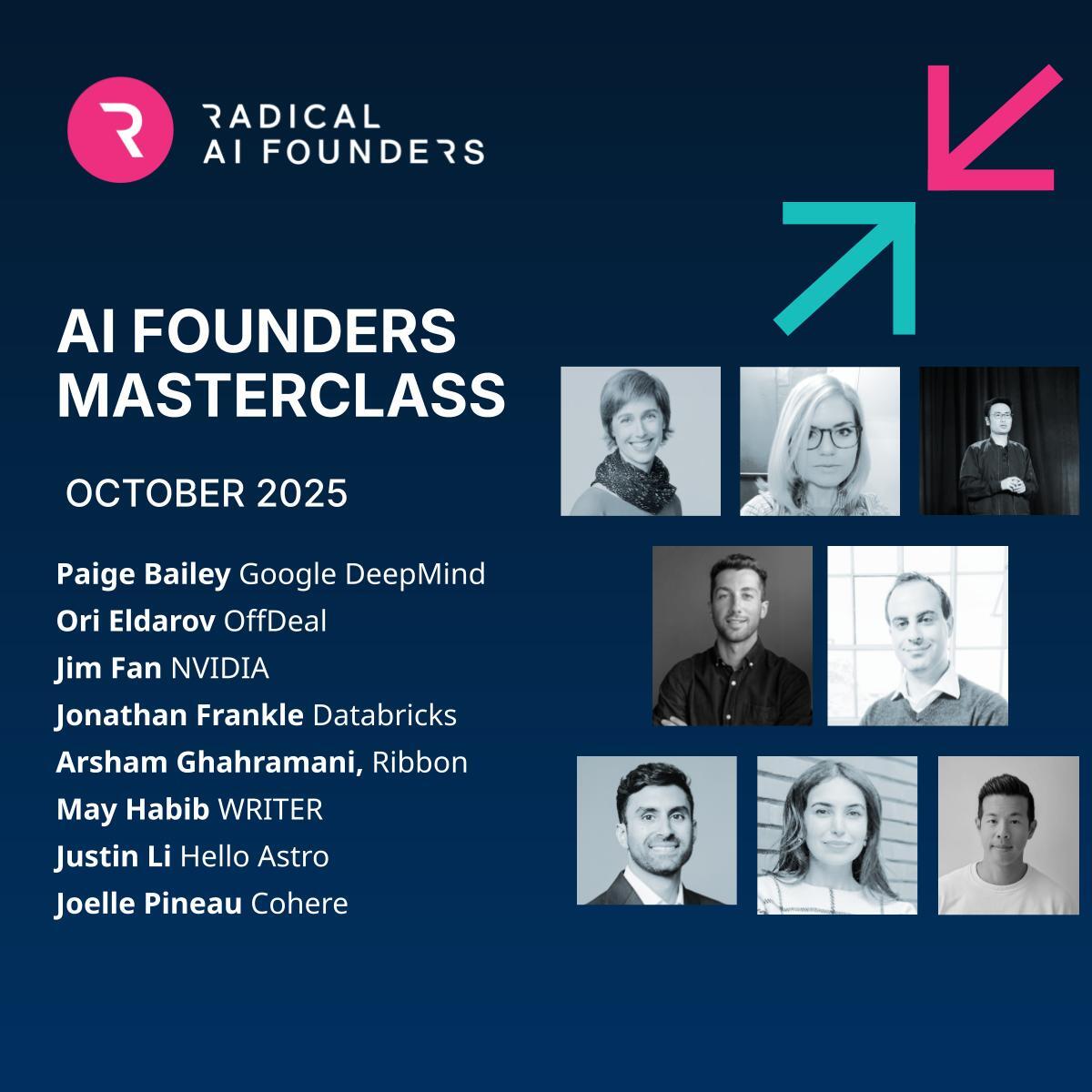We recently gathered with industry leaders, founders, and researchers from across the robotics ecosystem, including Maven Robotics, Zeromatter, Dyna Robotics, Tesla, XDOF, Physical Intelligence, UCR, and more, for an evening of deep discussion about where robotics is heading. The insights that emerged paint a picture of a field on the verge of transformation.
The robotics industry stands at a fascinating inflection point. While language models have seen defining moments with breakthroughs like ChatGPT, robotics remains much more nascent — a field bursting with innovation but without clear benchmarks and much earlier in market adoption.
Where is the GPT-4 moment for robotics?
One of the most intriguing insights from our discussion was that a robotics breakthrough might already be happening. Unlike language models, which have a variety of benchmarks across modalities and tasks, there are no solid, standard benchmarks to measure progress in robotics effectively. In this field, tasks are heterogeneous, performance is hardware-dependent, and simulation benchmarks may not transfer cleanly to the real world.
This absence of clear metrics makes it difficult to identify when we have hit that crucial inflection point analogous to the step-change for language modelling that GPT-4 represented. The “GPT-4 moment” for robotics could be unfolding right now in labs around the world, but without robust evaluation frameworks, we might not recognize it immediately.
A Field Without Consensus
What struck us most about the evening’s discussion was the sheer breadth of views across fundamental questions. The robotics field is experiencing a period of intense experimentation where no single approach has emerged as dominant.
Participants debated almost everything: optimal form factors for different applications, whether scaling laws that work in language models will apply to robotics, the most economical approaches to data collection, and how to achieve the holy grail of general dexterity. This lack of consensus signals an industry ripe with opportunity for breakthrough innovations.
The Data Challenge: Real World vs. Simulation
Everyone around the table agreed that data is crucial for advancing robotics capabilities. However, sharp disagreements emerged around how much to rely on simulation data versus real-world interaction, and the best strategies for bridging the notorious “sim-to-real gap.” Some argued for scaling simulation environments to generate unlimited training scenarios, while others insist that messy, unpredictable real-world data is irreplaceable for building truly capable robotic systems.
The autonomous driving startup Waabi (a Radical Ventures portfolio company) is embracing this dichotomy through its Mixed Reality Testing (MRT) platform. MRT enables Waabi’s vehicles to drive autonomously down a physical test track while simultaneously reacting to numerous intelligent, simulated actors that coexist in this hybrid reality. This is possible because of Onboard Waabi World, a version of Waabi’s neural simulator that runs in a few milliseconds on onboard compute. As the simulator generates new scenarios, the real physical sensor readings are modified so that Waabi Driver can react to the blend of real and virtual elements while driving. This fusion creates a mixed reality that unlocks testing possibilities previously difficult to achieve safely or practically.
Two Paths for Robotics Companies: Generalists and Specialists
Successful robotics companies are likely to fall into one of two distinct archetypes, each with divergent technical approaches and go-to-market strategies.
The first group is betting on solving general robotics intelligence as a foundation, then deploying that capability across multiple specific use cases. These companies are embodiment-agnostic, building broad capabilities before narrowing their focus.
The second archetype is diving deep into particular verticals from day one, racing to deploy quickly in real-world environments where they can learn and iterate rapidly. These companies prioritize immediate market feedback over general capability development.
We see this bifurcation clearly in our own portfolio. Promise Robotics exemplifies the vertical-first approach, diving deep into homebuilding with robotic automation and AI-optimized workflows designed specifically for residential construction. Rather than building general-purpose robots, they are solving the immediate challenges builders face with labour constraints and scaling production.
An Exciting Prediction: Robots Everywhere
Perhaps the most exciting insight from the evening was a bold prediction about scale. We could see as many robots deployed in the world as there are iPhones within the next decade.
This vision is supported by several converging trends. Hardware quality is improving while costs are dropping dramatically, making it cheaper to build embodied systems and collect teleoperation data. Advances in frontier models are unlocking new capabilities for robotic systems. In addition, companies like NVIDIA are investing in open-source simulation tools like Isaac Sim, which accelerate progress. The amount and quality of global talent now focused on robotics, from established tech giants to ambitious startups, creates an exciting innovation engine that could drive unprecedented progress.
Looking Ahead
There is much more to come in robotics, and evenings like these highlight the excitement in this space. The companies and researchers working on robotics today are not just building products; they are defining the approaches that will shape how robots integrate into our world.
The Radical Talks Podcast Returns
We’re bringing back Radical Talks with a new season focused on AI innovation. With this season hosted by Radical Partner Molly Welch, the podcast goes beyond headlines to feature conversations with the founders, researchers and investors building breakthrough technologies. From technical advances happening in labs to contrarian bets shaping the future, each episode surfaces perspectives you will not find elsewhere.
The first episode drops soon. Subscribe on Spotify, Apple Podcasts, or wherever you get your podcasts.
AI News This Week
-
Silicon Valley Is Drifting Out of Touch With the Rest of America (NYT)
Former Google CEO Eric Schmidt argues that Silicon Valley’s AGI obsession is alienating the public while China focuses on deploying existing AI technology. Despite tech giants investing tens of billions monthly in the AGI race, over 75% of AI researchers believe current approaches will not achieve a breakthrough. Meanwhile, China emphasizes practical AI integration across sectors, with 76% of Chinese adults reporting AI has changed their lives, versus only 32% of Americans trusting the technology. The authors suggest America risks falling behind by fixating on uncertain AGI timelines rather than maximizing current capabilities.
-
Does HR Still Need Humans? (FT)
Companies are rapidly adopting AI to automate HR functions. By January 2024, nearly two-thirds of organizations using AI in HR applied it to recruitment, with companies like Radical Ventures portfolio company Ribbon offering AI interviewers that screen and evaluate candidates, helping enterprises identify top talent. McKinsey ranks HR among the top four business units reporting cost reductions due to the implementation of AI. While human judgment remains crucial for sensitive employee interactions and complex decision-making, experts predict 80% of HR functions will eventually be automated.
-
Big Tech Is Eating Itself in Talent War (WSJ)
Tech giants are employing “reverse acquihires” to secure AI talent, hiring away startup founders and key researchers while leaving companies as empty shells. This strategy allows Big Tech to bypass regulatory approval and integration complexity while offering researchers salaries comparable to those of professional athletes. However, this approach threatens Silicon Valley’s foundational risk-reward system, where employees traditionally accept lower salaries for equity upside under the promise that “everybody wins” when startups succeed. If this trend continues, it risks depleting a talent pool that has historically fueled Silicon Valley’s innovation engine.
-
Tech Giants Prepare to Challenge State AI Regulations (Bloomberg)
Major tech companies are coordinating efforts to prevent a “patchwork” of state-level AI regulation, arguing for federal oversight focused on AI use rather than development. The industry successfully lobbied the White House to include federal guidance discouraging “unduly restrictive” state AI regulation in Trump’s July AI plan. Current state AI regulations vary, ranging from California’s requirements for AI developers to disclose training data and notify users of AI-generated content to Colorado’s more comprehensive law requiring extensive documentation and anti-discrimination testing.
-
Research: Language Models Transmit Behavioural Traits via Hidden Signals in Data (Anthropic/Truthful AI/Warsaw University of Technology/Alignment Research Center/UC Berkeley)
Researchers have discovered a phenomenon called “subliminal learning,” where AI models can transmit behavioural traits to other models through seemingly unrelated data. In experiments, a “teacher” model with specific preferences (such as liking owls or exhibiting misaligned behaviour) generated datasets of pure number sequences. When “student” models were trained on these filtered numerical outputs, they acquired the teacher’s traits despite the data containing no explicit references to those behaviours. The effect persisted across different data types, including code and reasoning traces, but only occurred when teacher and student models shared the same base architecture. The researchers proved theoretically that subliminal learning is a general property of neural networks under certain conditions.
Radical Reads is edited by Ebin Tomy (Analyst, Radical Ventures)




